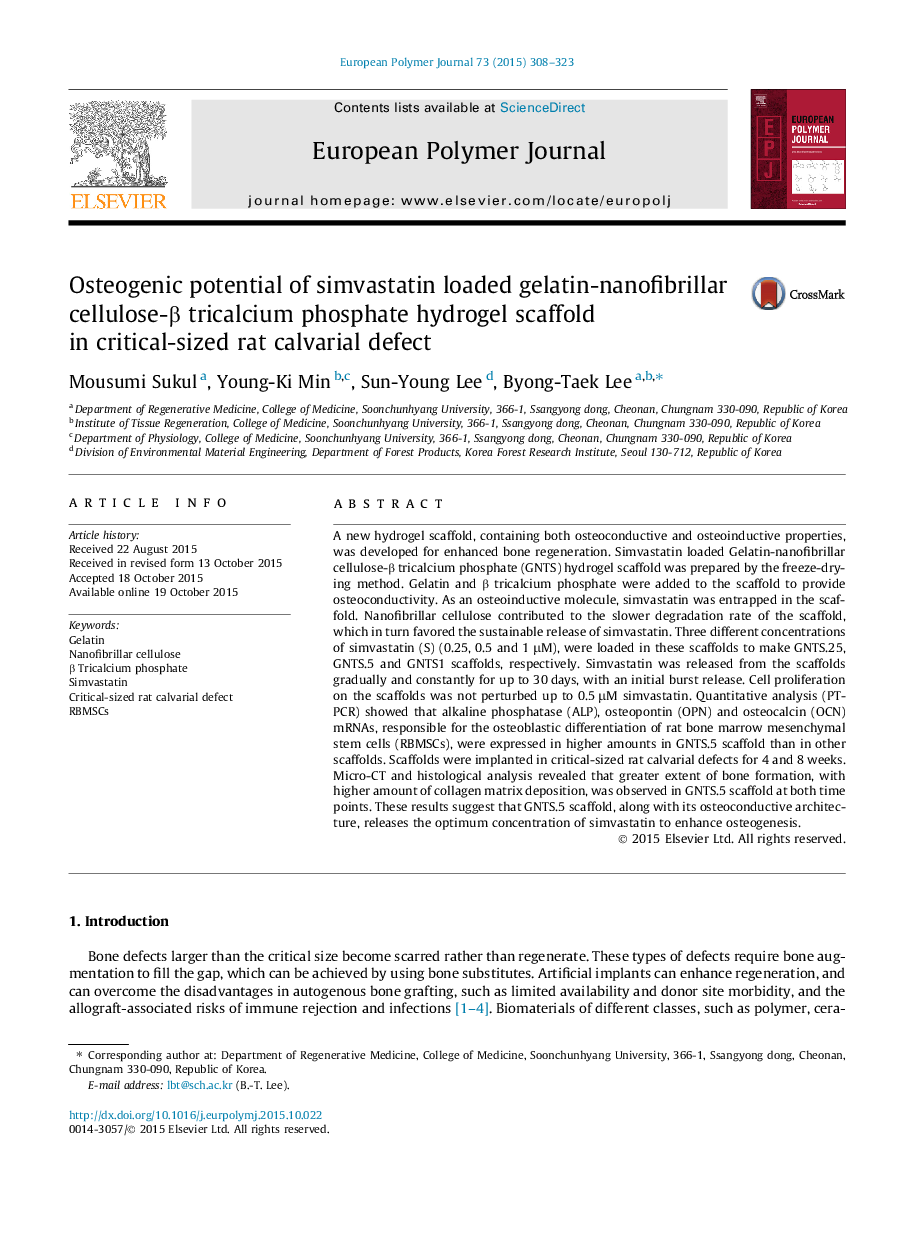| کد مقاله | کد نشریه | سال انتشار | مقاله انگلیسی | نسخه تمام متن |
|---|---|---|---|---|
| 1400381 | 1501362 | 2015 | 16 صفحه PDF | دانلود رایگان |

• The hydrogel scaffold provides both osteoconductive and osteoinductive properties.
• Simvastatin released sustainably from the scaffold to treat critical-sized defects.
• Higher amount of bone formation occurs with optimum concentration of simvastatin.
A new hydrogel scaffold, containing both osteoconductive and osteoinductive properties, was developed for enhanced bone regeneration. Simvastatin loaded Gelatin-nanofibrillar cellulose-β tricalcium phosphate (GNTS) hydrogel scaffold was prepared by the freeze-drying method. Gelatin and β tricalcium phosphate were added to the scaffold to provide osteoconductivity. As an osteoinductive molecule, simvastatin was entrapped in the scaffold. Nanofibrillar cellulose contributed to the slower degradation rate of the scaffold, which in turn favored the sustainable release of simvastatin. Three different concentrations of simvastatin (S) (0.25, 0.5 and 1 μM), were loaded in these scaffolds to make GNTS.25, GNTS.5 and GNTS1 scaffolds, respectively. Simvastatin was released from the scaffolds gradually and constantly for up to 30 days, with an initial burst release. Cell proliferation on the scaffolds was not perturbed up to 0.5 μM simvastatin. Quantitative analysis (PT-PCR) showed that alkaline phosphatase (ALP), osteopontin (OPN) and osteocalcin (OCN) mRNAs, responsible for the osteoblastic differentiation of rat bone marrow mesenchymal stem cells (RBMSCs), were expressed in higher amounts in GNTS.5 scaffold than in other scaffolds. Scaffolds were implanted in critical-sized rat calvarial defects for 4 and 8 weeks. Micro-CT and histological analysis revealed that greater extent of bone formation, with higher amount of collagen matrix deposition, was observed in GNTS.5 scaffold at both time points. These results suggest that GNTS.5 scaffold, along with its osteoconductive architecture, releases the optimum concentration of simvastatin to enhance osteogenesis.
Figure optionsDownload as PowerPoint slide
Journal: European Polymer Journal - Volume 73, December 2015, Pages 308–323